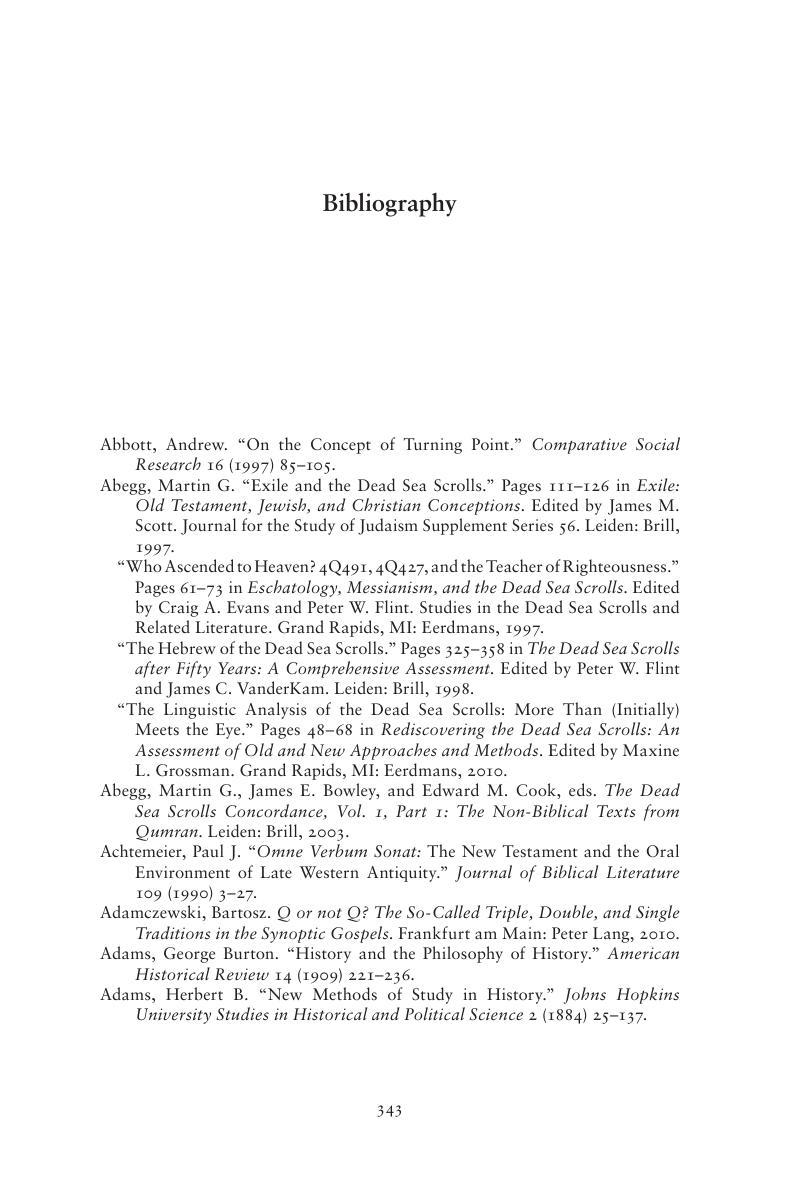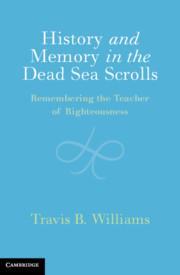Book contents
- History and Memory in the Dead Sea Scrolls
- History and Memory in the Dead Sea Scrolls
- Copyright page
- Dedication
- Contents
- Tables
- Acknowledgments
- Abbreviations
- 1 Introduction
- Part I Methodological Considerations
- Part II The Circumstances of Memory
- Part III The Processes of Memory
- Conclusion
- Book part
- Bibliography
- Ancient Sources
- Modern Authors
- Subject Index
- References
Bibliography
Published online by Cambridge University Press: 13 May 2019
- History and Memory in the Dead Sea Scrolls
- History and Memory in the Dead Sea Scrolls
- Copyright page
- Dedication
- Contents
- Tables
- Acknowledgments
- Abbreviations
- 1 Introduction
- Part I Methodological Considerations
- Part II The Circumstances of Memory
- Part III The Processes of Memory
- Conclusion
- Book part
- Bibliography
- Ancient Sources
- Modern Authors
- Subject Index
- References
Summary

- Type
- Chapter
- Information
- History and Memory in the Dead Sea ScrollsRemembering the Teacher of Righteousness, pp. 343 - 424Publisher: Cambridge University PressPrint publication year: 2019



